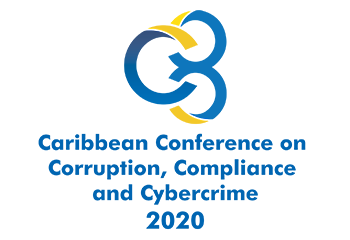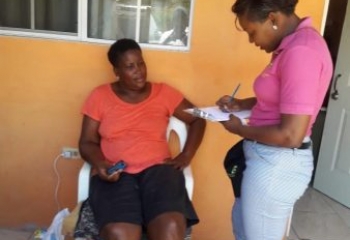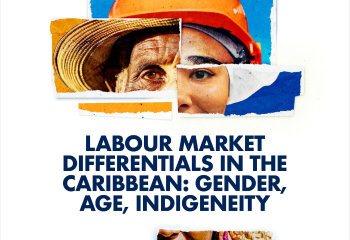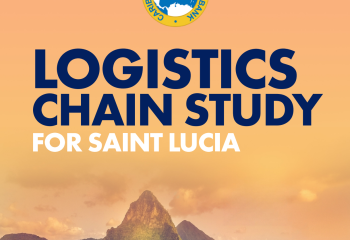The Role of Partnerships in Stimulating Sustainable Economic Development
Good afternoon, ladies and gentlemen. It is a pleasure to be here.
I am especially grateful to the Barbados Chamber of Commerce and Industry for affording me the opportunity to continue my dialogue with a very critical group of stakeholders, the Private Sector.
It is no secret that the Caribbean Development Bank (CDB) is on a purposeful, targeted mission to move the Region’s private sector from the sidelines to the forefront of Sustainable Development. If this shift sounds audacious, then prepare to be even more surprised when I tell you that the matter is not up for debate. We simply have no other choice. In the aftermath of the COVID-19 pandemic, which came after more than a decade of various economic setbacks, the Caribbean is in the unenviable position of having to rebuild and reposition after being hit by a multiplicity of shocks, which amplified our structural weaknesses.
A major implication of this precarious situation is that the public investment-driven growth model, which many of CDB’s Borrowing Member Countries have relied on, is reaching its limits given high debt levels and limited domestic revenue mobilisation, and consequently debt sustainability constraints. Further, the pandemic has aggravated the tension between the significant investment needed for achieving growth and resilience, the enormous development financing to do so, and scarce public and external concessional resources.
According to a report of the Economic Commission for Latin America and the Caribbean (ECLAC), the official development assistance (ODA) net flows to the Caribbean have been on a downward trend since 1990. Also, for the most part, Caribbean countries’ access to private international debt markets during and after the 2008 global financial crisis was costlier and more limited than it was for many of the larger economies of Latin America. Although there are sizeable savings in the Region, the current structure of regional financial markets does not encourage effective intermediation.
The limited access to adequate finance means funding may not be available or easily accessible for developing all sectors (for example, health or education), thereby restricting the path to comprehensive development — namely, enlarging our ecosystem over time, while maintaining its specific and integrated nature at any point in time. In this environment, in order to alleviate tension and promote a strong and resilient recovery — one that is job-rich, with less inequality, and is welfare enhancing — the Caribbean region needs to mobilise more financing from and to the private sector. Frankly speaking, we must rethink our development strategies.
The first step is to recognise that businesses play an important role in fostering development. Therefore, the private sector must be seen as a key development partner in meeting the Region’s development needs. Not only is this a long-term endeavor, it must also be built on overcoming the mutual distrust that prevails between public and private sectors. Billions of dollars are needed to support economic development in the Caribbean, address the costly infrastructure gaps, and promote recovery and repositioning from the COVID-19-induced downturn. The ambition of achieving sustainable livelihoods of the citizenry, human development for advancing innovation and promoting sustainability, as well as safe and secure communities cannot be achieved solely by tapping on traditional public financing sources. These have been inadequate in the past and will not be near adequate in a future of greater needs. I suggest that a large part of the additional investment and financing will need to come from the private sector, not as residual financiers, but as partners in development.
We may ask why has the Private Sector remained on the sidelines of development? For one thing, the development arena is fraught with risks that private investors may be averse to. The inability to identify bankable projects and manage the execution of these projects have been key constraints identified by international investors. I also suggest we rethink the notion that discrete projects and their economic returns are sufficient criteria for advancing development. For example, should the risk on a project be assessed on that project alone or more broadly on the projects’ contribution to the sustainability of the ecosystem in which it is embedded? And how would that risk be modified if we had less policy uncertainty to contend with?
Macroeconomic instability, which is a substantial part of any risk-return assessment, is another key concern for financial investors. The truth is, our environment poses a number of macroeconomic risks including institutional capacity, the size and liquidity of markets, and macroeconomic volatility. No matter how viable individual projects may be, economic and financial crises, large swings in economic activity, fiscal imbalances, and volatility in foreign exchange rates increase uncertainty and discourage investors because these factors put their returns at risk. Although risks in the region may be abnormally high, other environments also face risk and manage well, and so the question for us is how can we adequately mitigate and/or transfer risk to thresholds of acceptability?
There are also exit risks, as investment exits can be more difficult in the Caribbean than in other regions. The ability to exit an investment is viewed as critical for investors’ ability to create value across their portfolios. While activity of private equity funds is low in the Region, a situation which is exacerbated by small and underdeveloped financial market, we may ask should we not focus on attracting long-horizon, development-oriented, low-exit investor partners as a development strategy?
If we are aiming to attract international investors in development sectors our governments must tackle these obstacles as a priority. The best course of action, especially for economies with limited fiscal capacity, is to focus on a few key barriers rather than trying to fix the whole business environment in a diluted and potentially inconsistent manner. Governments should also continuously improve the overall regulatory framework and strengthen local institutions.
Our risk challenge requires a comprehensive and strategic approach, anchored on our specific initial conditions (where we are), clarity on the development outcomes being targeted (where we are going), and a reduction of uncertainty during the transition (perseverance for attaining objectives). That would call for policies that strengthen macroeconomic management, build investment-friendly risk-mitigating environments, and enhance the effectiveness of partnerships among private investors, governments, and the international community.
Now while there is considerable onus on our governments to create an enabling and enticing environment to attract private players to the development space, the Private Sector must also get serious about taking up these opportunities. This calls for the private sector to reimagine its thinking on roles and responsibilities in the Sustainable Development paradigm. The 2030 Agenda for Sustainable Development Goals (SDGs) has identified the private sector as a main partner in sustainable development, alongside governments and civil society. How do we translate this?
It is no secret that CDB shares the view that accelerated sustainable development requires a partnership for development between private and public sectors. In fact, I have repeatedly said that Sustainable Development is too important for it to be the exclusive purview of our governments. Now please note, the call for greater Private Sector involvement in forging a sustainable future for countries is by no means unique to CDB or the Caribbean. A current growing global trend is for businesses to account for their sustainability efforts through formal mechanisms. This emphasis has led to the emergence and application of Environmental, Social, and Corporate Governance (ESG) principles in multiple aspects of decision making.
ESG speaks to mounting expectations and even requirements for corporations to declare their ESG initiatives to assess impact on sustainability. Local entities will not be able to sidestep the fact that investors, financiers, potential employees, and other stakeholders are now demanding greater transparency around companies’ sustainability efforts. In fact, those of you targeting or operating in overseas markets, are probably aware that the European Union has stipulations about ESG disclosure and ratings, and the U.S. Securities and Exchange Commission will be taking a similar stance.
While we might be tempted to feel like this is another burden on private enterprise, it is a start at viewing development as an ecosystem and recognising the whole is only as good as the sum of the parts. The good news is that profitability and development are not incompatible. In fact, alternative forms of investment designed to fit the unique needs of investors in development sectors are gradually becoming mainstream. Impact investment is an emerging approach to financing that sits along the spectrum between philanthropy and commercial investments that seek investment-specific financial returns exclusively. The concept provides an opportunity to use private investment in development-promoting activities that also address social or environmental needs (United Nations Development Programme 2016).
Impact investors range from players targeting market rate financial returns to entities that accept below-market returns, and who use either not-for-profit funds or alternative non-financial metrics (including social and environmental). In a recent survey of impact investors at the global level, more than 80 percent of respondents indicated progress toward the SDG agenda as a “very” or “somewhat” important motivation to their fund goals, providing a framework for investment priorities (2000 Annual Impact Investor Survey. “Global Impact Investing Network” New York).
So how can we forge effective partnerships between Private Sector and Governments to achieve development outcomes? Importantly, because most infrastructure projects with private participation are initially appraised and/or implemented in collaboration with governments or require complementary public assets, a strong public (even national) investment management framework is essential for optimal cooperation between public and private partners.
On one hand, the Government should keep improving the regulatory framework while observing prudential macroeconomic policies that result in economic stability. On the other hand, the Private Sector tends to be better positioned to innovate, develop new industries, and push forward technology adoption and specialised training. I must add that there is room for governments to embrace investing in innovation to help co-create markets, reducing risk, incentivising private enterprise, and overcoming market failure. It is that symbiotic relationship, where expertise, technology, and innovation fuse to achieve national objectives that will bolster sustainable and effective partnerships in development.
Allow me to provide some examples of effective collaboration. Corporación Interamericana para el Financiamiento de Infraestructura, S.A (CIFI), one of CDB’s long-standing investee companies, provides financing to small and medium-sized infrastructure projects in the Caribbean region and Latin America. The company has been able to mobilise private capital for sustainable infrastructure, while partnering with local governments, financial institutions, and multilateral lenders. CIFI has also been implementing ESG adoption in its projects and its business model has become a reference in the Region.
Portland Equity Fund, another long-standing CDB partner, has been providing much needed equity financing to companies in the Region. Portland has brought managerial expertise and increased operating efficiency to its investee companies, as well as implementation of best international practices. Portland Equity has been particularly active in introducing corporate governance principles to its investees’ clients and, as a guiding principle, increasing the share of women-owned business that they support. Some of the companies in which they invested in the past have started to outperform the market in terms of profitability and sustainability, which has allowed Portland Equity to start new investment cycles of its equity fund, increasing its business volume, and, at the same time, bringing significant economic development.
At the broader level, Republic Financial Holdings Limited Group has pledged to lend, invest, and arrange $200 million US dollars in climate goals and/or clean energy instruments by 2025. This adds a stock of private capital that can contribute to the Region’s attainment of climate-related and clean energy goals under the 2030 Agenda. Republic Financial Holdings has committed to engaging small- and medium-sized enterprises as an engine of growth in this transition. This is an encouraging sign.
Similarly, Williams Renewable Energy Limited (WREL) has already raised $17 million Barbados dollars – out of an overall target of $34 million – to support the solar rooftop energy transition here in Barbados. This is one of the first green energy bonds in the Caribbean.
So even though conventional thinking may see the Private Sector as an accessory to the social and economic development process, the reality is that the Sector must become a driving force. This requires purposeful objectives with minimum policy uncertainty and coordinating mechanisms for ensuring the complementarity of efforts. The examples I previously highlighted are evidence that the shift has started, but the evolution must be accelerated because we do not have the luxury of time. As I have repeatedly argued, the traditional public-private partnership (PPP) is a tool of the past with very limited utility for forging our desired future. I am therefore proposing that we refashion these instruments as Partnerships for Prosperity and Profits, more specifically, win/win propositions that yield returns while forging economic growth today that doesn’t sacrifice the prospects for tomorrow. This will provide a means through which national and regional development agendas can be implemented through the efficient, innovative, and objective-driven methods and approaches that are typically employed by profit-seeking entities to great effect.
Now it is essential to understand that I am not speaking of charity but of investment. Investments in the education sector can yield the multi-skilled, knowledge-oriented workforce necessary for industries of the future. That’s good for business. Investments that spur economic growth can expand the income and resources available to citizens, which will then increase purchasing power and enlarge the consumer base. That’s good for business. Investments that improve social services, reduce food and nutrition insecurity, and allow for a more affordable supply of energy, water, and other necessities lead to stable societies and resilient economies that are more attractive for foreign investment. That’s good for business.
However, these results will not be achieved if we leave them to chance. Therefore, the Private Sector must take an active role in directing and determining implementation of the sustainable development agenda as part of an overarching strategy for continued viability.
My friends, the best way to predict the future is to create it. Sustainable development will not become the norm unless all actors in our economies are aligned to reach it. We all have a development mandate and I look forward to working with you to make this Region a more prosperous place.
Thank you.





